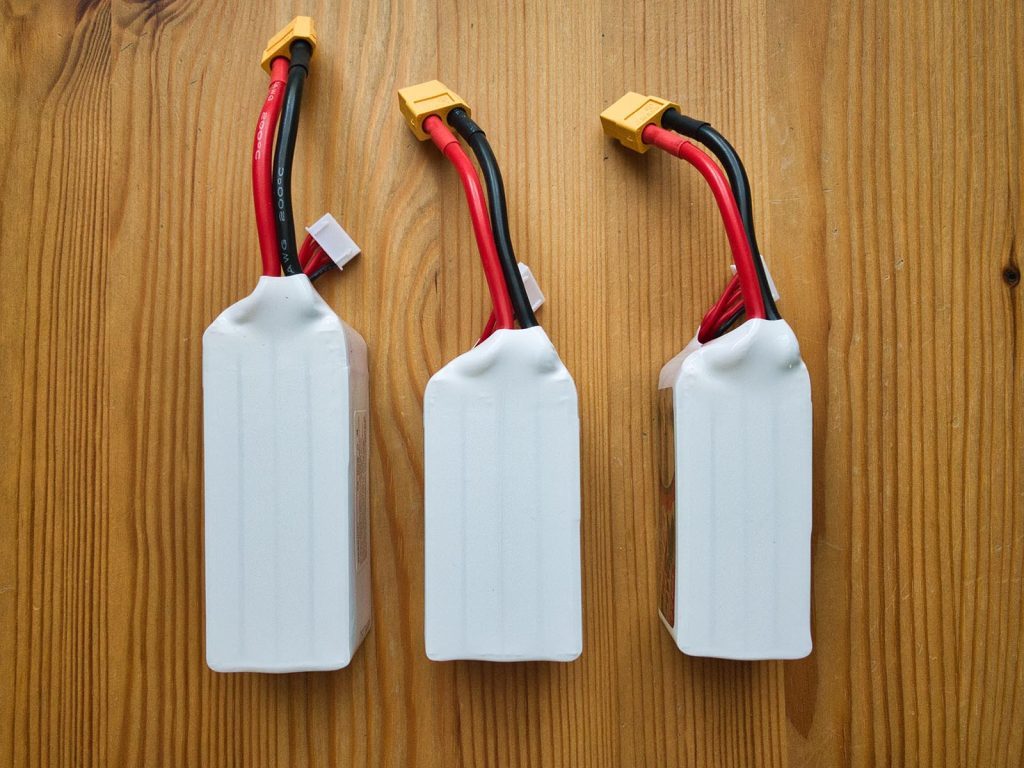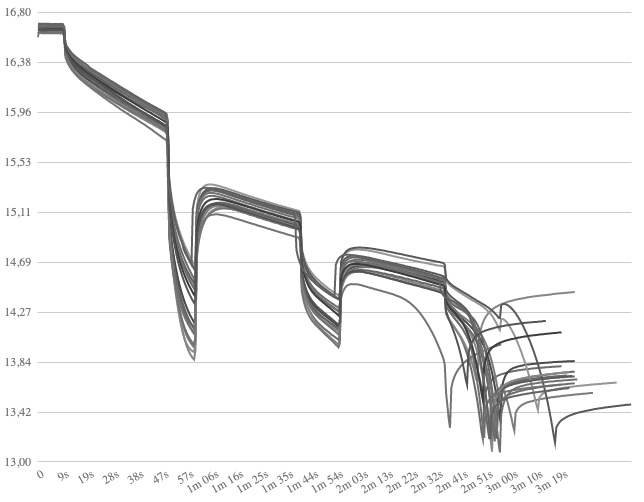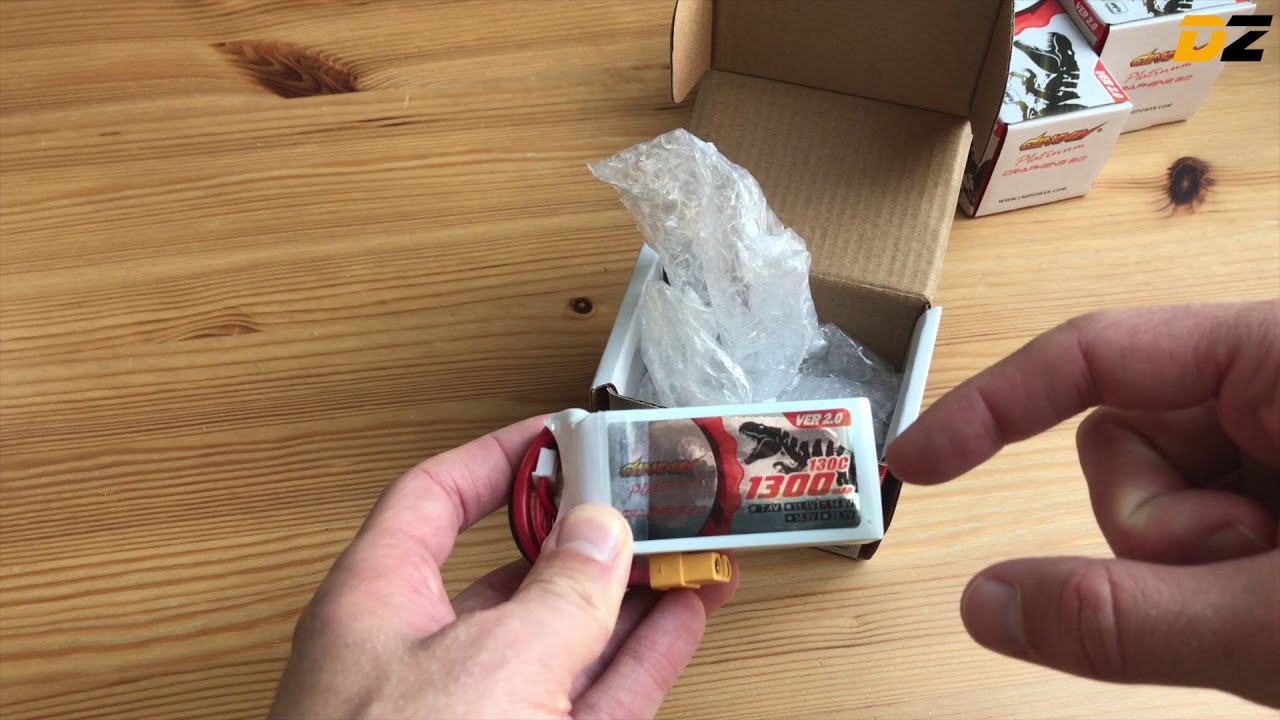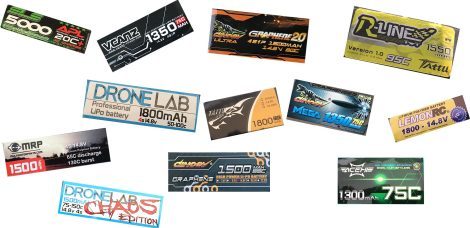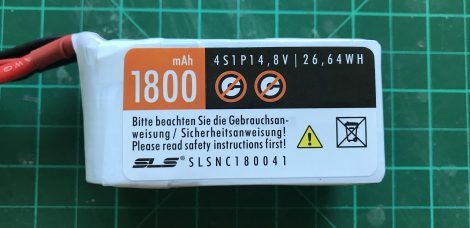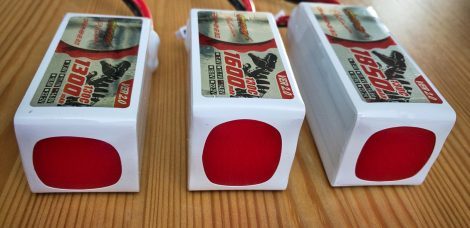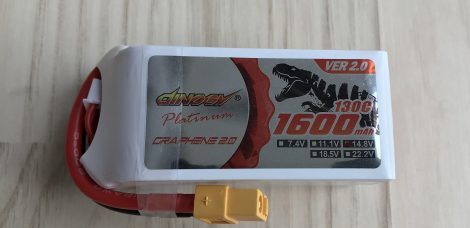Once again we are happy to present you our in-depth review of the all new Dinogy Platinum Graphene 2.0 4S 1850 mAh 130 C V2.0 high performance battery. Get excited for some interesting numbers!
Appearance
The new Dinogy Platinum Graphene 2.0 V2.0 batteries are delivered in a small cardboard box with the usual Dinogy design printed on the outside. Inside you find the battery packed in bubble wrap for safe transport. All the important technical data (charge voltage, cut-off voltage, etc) are printed on the back of the pack. That is something we have commended Dinogy* on again and again. If you are flying different battery brands it is vital to have all the important info about your battery where your battery is (and not on some small sheet of paper back home).
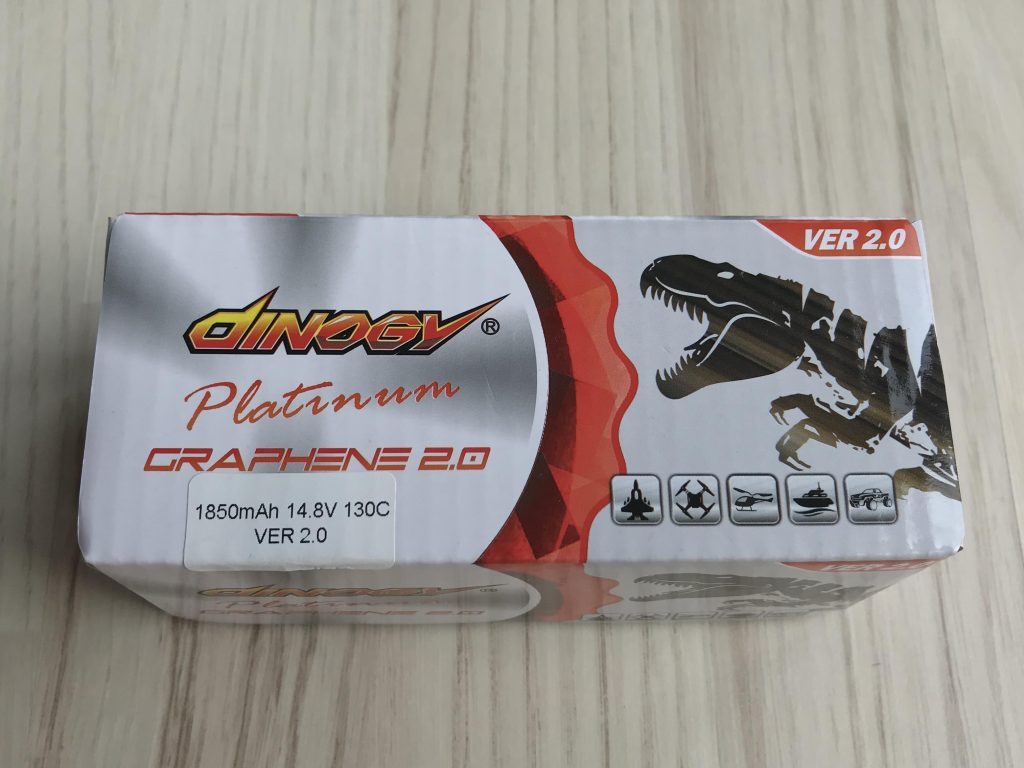

The new Dinogy Platinum Graphene 2.0 V2.0 packs are the first batteries from Dinogy receiving a 130 C rating. The V2.0 of the Platinum series now has a white shrink wrapping. The red honeycomb-style plates on the sides still is here. The pack also claims to squeeze in 50 mAh bonus capacity compared to other 1800 mAh batteries.
The overall built-quality is very good – nothing to worry about. The complete 4S line up only differs in width regarding the total dimensions as you can see in the picture below.
Technical Design
The Dinogy Platinum Graphene 2.0 1850 mAh 130 C V2.0 battery is a standard 4S1P config flight pack for high power use. It utilises the newest generation of Graphene 2.0 cell chemistry. Charge rates up to 3C enable you to fill the pack up quick, if you ever have the need to. We still favour to stick with 1C charging for our tests.
Build Quality: Very good. The pack feels very well made on the outside. Connection terminal looks solid. The white shrink wrap is really tight. There should be no puffing. It looks like there is a spacer between cell 2 and 3 to allow better ventilation.
Plugs: The L&E Battery pack comes with standard XT60 connectors* equipped.
Cables: Stefans Lipo Shop uses 12 AWG wires* on this packs. The high flexible silicon layer is rated up to 200°C. Cable length is about 7 centimetres.
Balancing plugs: Standard XT-system. Balancer wires* are very short (1.8 cm), which is a benefit in terms of getting them out of the prop-range on the aircraft. Still 1.8 cm are a little too short for comfortable handling when charging. Main power wires connect to the top, the balancer cable is connected at the bottom of the pack.
Buy Dinogy Batteries on Amazon!*
Technical Details
| Manufacturer | L & E Battery |
| Type | Dinogy Platinum V2.0 |
| Cell chemistry | Lithium Polymere (LiPo) |
| Cell type | Graphene 2.0 130 C |
| Cell count | 4 |
| Pack configuration | 4S1P |
| Capacity | 1850 mAh |
| Max. charge current | 5,4 A |
| Discharge current continuous | 130 C |
| Max. discharge current | 240,5 A |
| Weight (incl. plugs) | ca. 219 grams |
| Measurements listed | - |
| Measurements measured | 94 x 34 x 36 mm |
| Retail Price | 41.99 US-$ (MSRP) |
| Dealer | Amazon |
| Note | This battery has been directly donated by the manufacturer / distributor for review purposes. |
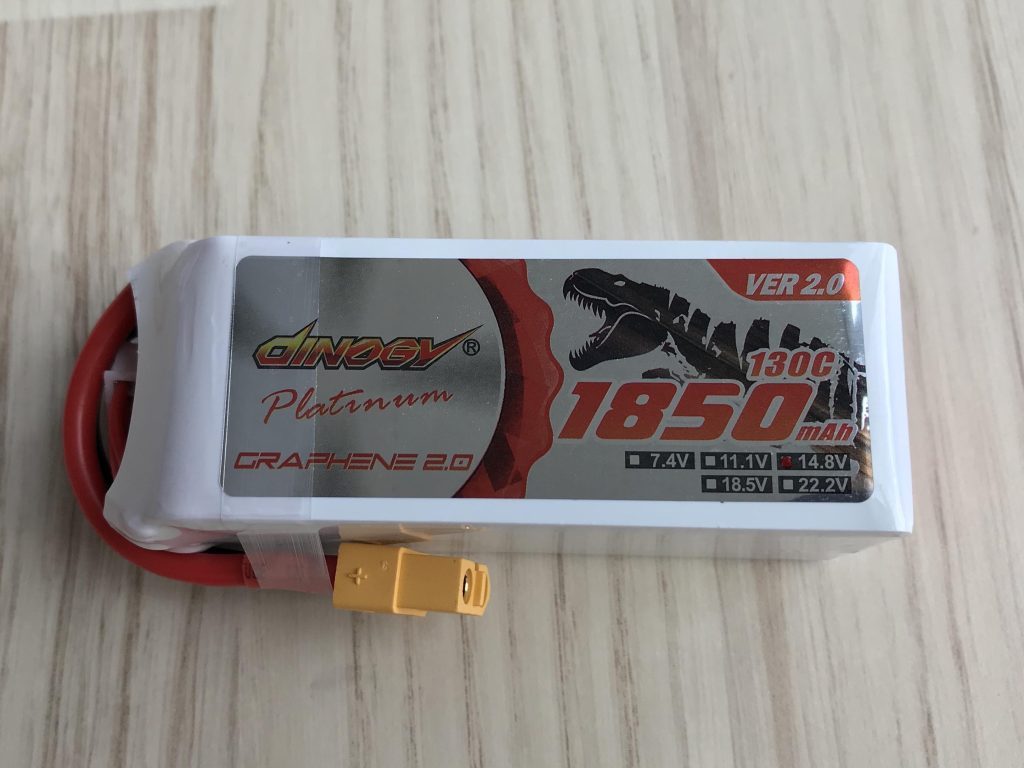
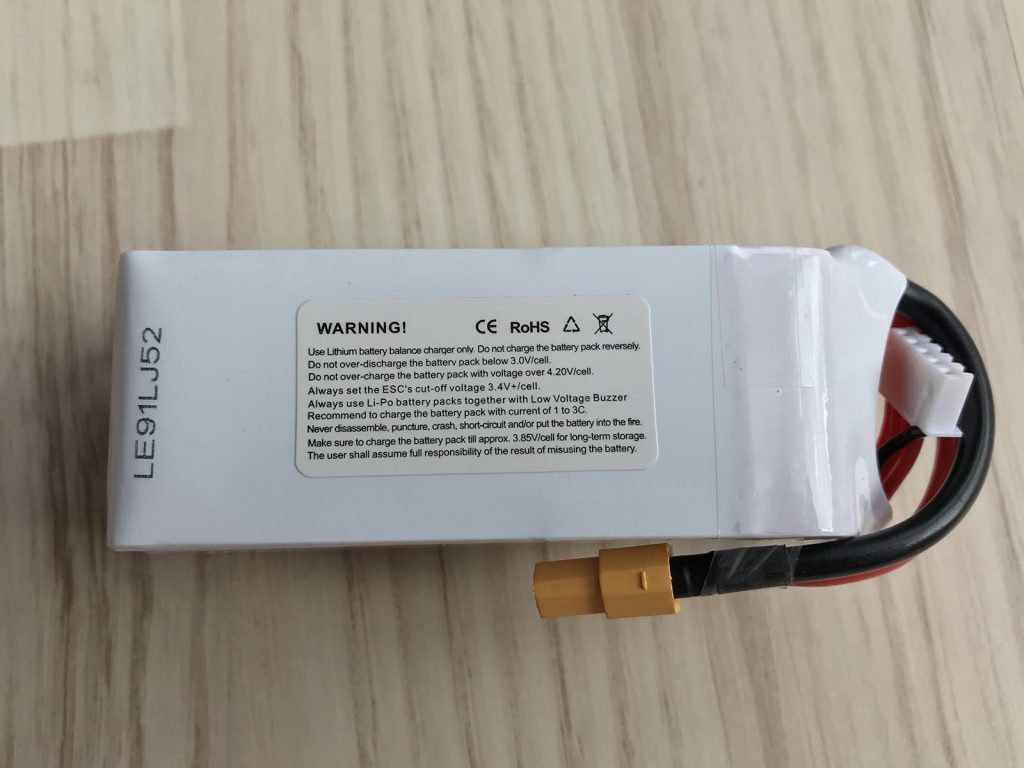
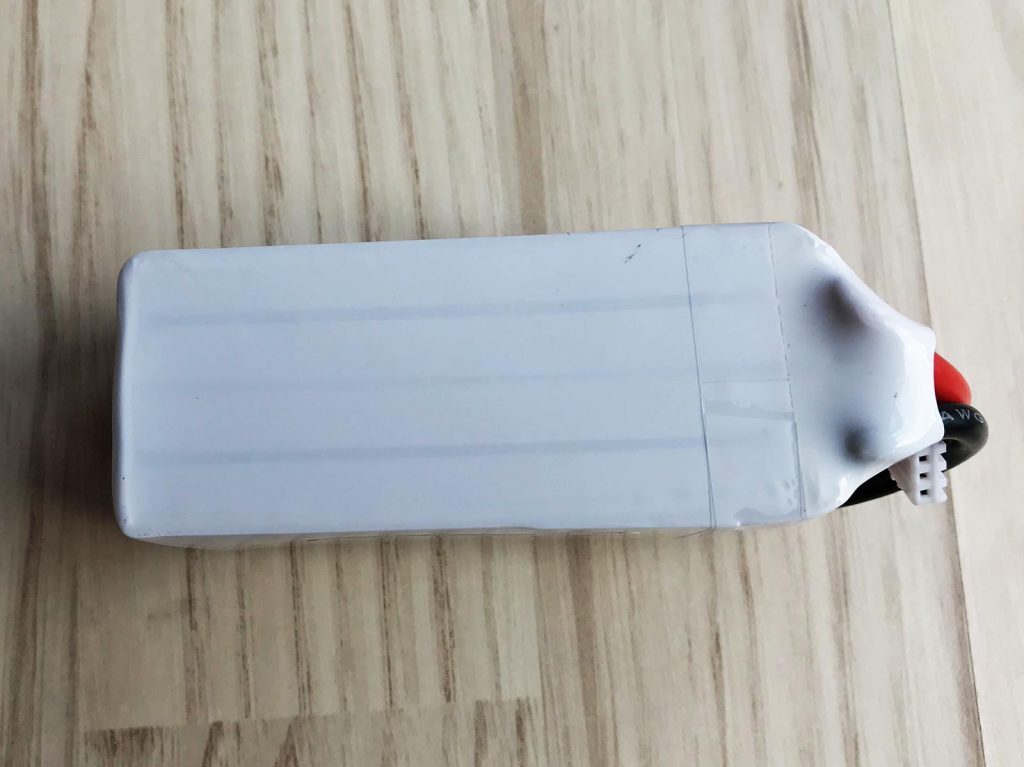
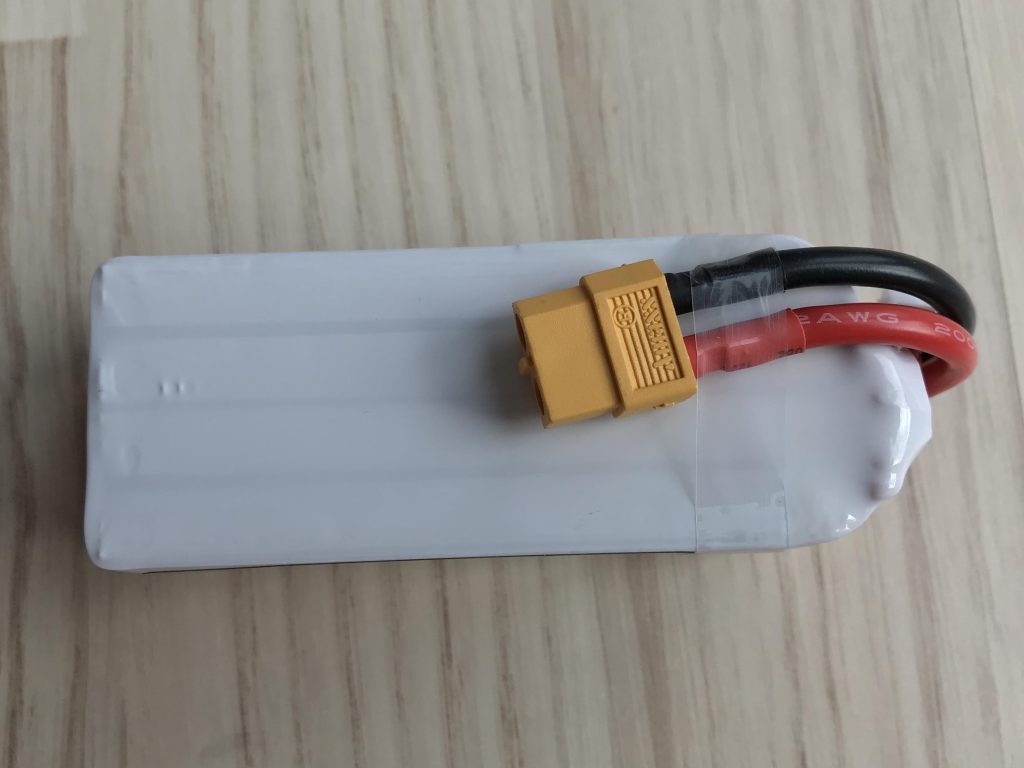

Hands-On Video
We decided to provide you some more impressions by filming a short hands-on video of the Dinogy Platinum V2.0 battery series. It’s in German, still you should be able to get a good impression of the battery’s nice build quality.
Break-in documentation
The battery followed the standard break-in-process: The pack is charged at a rate of 1C until CV-phase ends with current of 1/10C. The break-in phase consists of four charging cycles at 1C and four corresponding discharges at 1 C / 4C / 10C and 20 C.
Anomalies: No anomalies during break-in.
Charging process
CV-Phase is short on this cell type. Balancing in normal mode took 0:59 min. Cell drift during charge was unobtrusive. This is for 1C charge (1.8 A).
Load Testing
The main part of this battery test will consists of different load test settings showing the battery performance. Constant load testing is used to judge the advertised C-ratings as well as look at cell drift under high loads. We also check on internal resistance once more. Next up is the dynamic current test, which simulates a „real“ flight with changing (=dynamic) loads. For test methodology please check the dedicated methodology page!
Constant Load Testing
Constant load testing follows a certain load pattern of different constant currents. Base load is 10 C. Current pulses at 50 C, 35 C, 20 C and 30 C are maintained for time intervals between 10 and 20 seconds. For more details please refer to the test methodology page.
Capacity Usage
During this test the pack delivered 1372 mAh. This is 74.3 % of nominal capacity. A very good result.
Average cell voltages
The following table lists the average voltages per cell, of the total pack, as well as the averaged value per cell as fraction of total voltage during phase of active load.
| Cell 1 | Cell 2 | Cell 3 | Cell 4 | Total | Average per cell | |
| Avg. Voltages | 3.771 V | 3.772 V | 3.775 V | 3.770 V | 15.088 V | 3.772 V |
Looking at average values the Dinogy pack performs very well. All cells stayed far above 3,7 V on average. An average value above 3,74 V / cell can be considered very good. The Dinogy Platinum Graphene 2.0 4S 1850 mAh V2.0 managed to score an average of 3.772 V / cell, which is nice!
Focus Voltages
Exceptionally interesting when testing a battery under a constant load for a longer period of time: the lowest voltage per cell just before load impulse is disabled. On top, you should have look at voltage recovery rate, that is: how fast do cell voltages rise again once load impulse is cut.
| Phase | Cell 1 | Cell 2 | Cell 3 | Cell 4 | Total |
| End of 50 C | 3.612 V | 3.630 V | 3.641 V | 3.663 V | 14.544 V |
| End of 35 C | 3.553 V | 3.564 V | 3.573 V | 3.583 V | 14.273 V |
| End of 20 C | 3.312 V | 3.278 V | 3.310 V | 3.293 V | 13.192 V |
| End of 30 C | - | - | - | - | - |
Voltage sag is very low on the Dinogy Platinum V2.0 1850 mAh pack. It becomes visible that even the 50C phase brings no real trouble to the 1850-mAh-pack. No cell went below 3.60 V on the high load phase. Keep in mind, we are talking 92,5 A over a couple of seconds at 50C here.
Average voltage recovery per second
Those values are specific to the test setting and not valid for the pack in general! Still they allow an estimated guess about how fast voltages rise again after current spikes.
| Cell 1 | Cell 2 | Cell 3 | Cell 4 | Total | |
| Avg. Recovery | 0.167 V / s | 0.0156 V / s | 0.0146 / s | 0.0012 V / s | 0.059 V /s |
As voltage sag in overall is very load (even on amp spikes), voltage recovers very quick accordingly. Nothing to complain here.
IR-Measurement
IR measurement is conducted using the four current pulses. Resistance for each cell is calculated in all four discharge phases. Shown values are averaged to cancel out different temperature points due to different discharge states during measurements.
| Cell | 1 | 2 | 3 | 4 | Total |
| Resistance [mΩ] | 2.19 | 2.01 | 2.15 | 2.18 | 8.53 |
Interpretation: The internal resistance of 2.13 mΩ average per cell indicates a „true“ C-rating of around 39 C (72.2 A). This is on the conservative side and represents a current draw that will make the pack last for a long time. This estimation falls in line with the nice voltage stability of the pack. This value is good result. Only the SLS NOC Race 1800 mAh 2N is still a few Cs stronger.
Cell drift under load
| Discharge Phase | 50 C | 35 C | 20 C | 30 C |
| Max Cell drift (V) | 0.051 V | 0.030 V | 0.034 V | - |
Cell drift is extremely low on the new Dinogy Platinum Graphene 2.0 4S 1850 mAh 130 C V2.0 packs during main discharge phase. This pack reaches exceptional results. Cells are matched very well on our test packs.
Key Temperature Facts
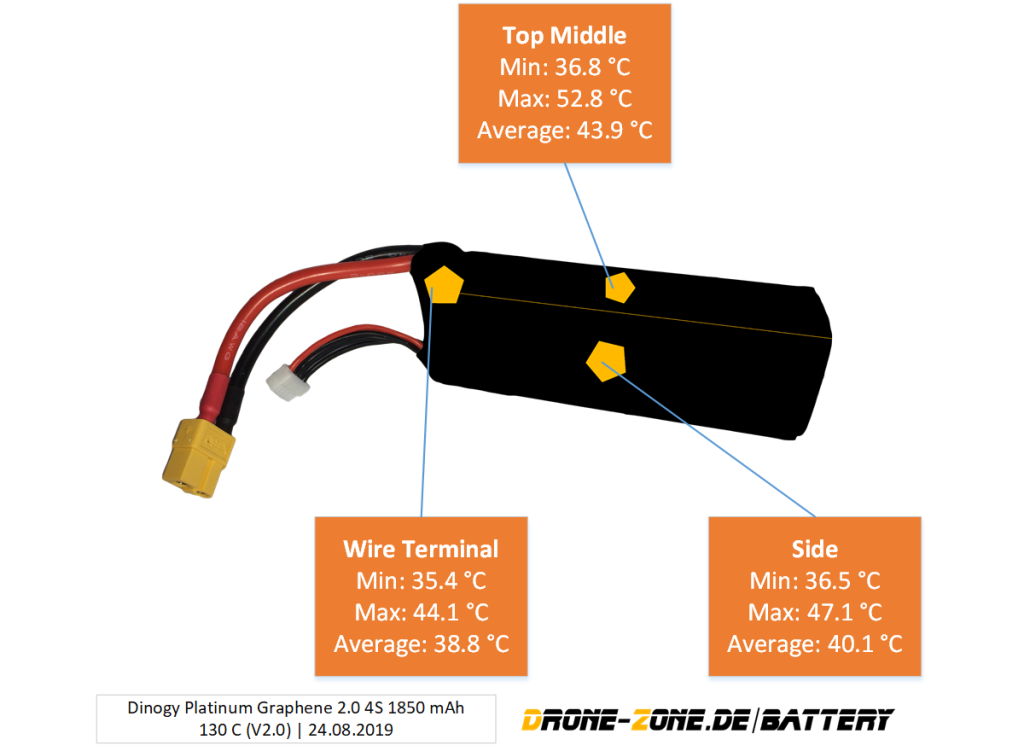
Temperature Development
Max. temp during discharge was around 52.8 °C on top of pack. This is a good value. The pack stays moderately cool. Note that heating of stressed LiPo packs will continue for some more time even when load is cut.
Market Comparison
The following chart shows all reviewed LiPos in the same product segment for direct comparison of performance. Higher values under load are better.
Constant 25 C Discharge
Pretty much a standard benchmark in the LiPo industry.
Cut-Off /warning value for this battery should be chosen 3.5 V minimum. After this point voltage drops quick.
Capacity Usage
The battery provided 1343 mAh (72.6 %) during the 25 C discharge. Really good!
Market Overview
Comparison of different reviewed 1800 mAh batteries under 25 C load.
Dynamic Load Testing
The dynamic load testing setting consists of two separate discharge scenarios that have been developed of two different real-life FPV flights. Pattern one represents a high speed low proximity flight around the open field with some hovering to the end. Average load is around 22 A. Second pattern is a free-style flight around trees in the park with some current spikes near 70 A. Average load on this flight is around 13 A due to longer floating periods.
Capacity Usage
During the test of pattern 1 the pack delivered 1371 mAh. This is 74.1 % of nominal capacity. Perfect. In patter 2 testing 1425 mAh (79.2 %) could be used until first cell reached cut-off voltage.
Market Comparison
The following charts give an overview of all tested packs in the 1800 mAh class so far.
The last chart of this review sums up the usable capacity during all four load scenarios. Please note that this is only the capacity consumed by the electronic load! There are losses due to heating of the pack, which could be approximated (see testing methodology page). All four tests are cut when any cell goes below cut-off voltage of 3,3 V (or pack goes above 58 °C on any of the three probes). If you would push further and go down to 3,0 V/cell you will be able to squeeze out some mAh more, but at the cost of excessive heat generation and shortening of pack life-span. This value will most likely differ from what you get when flying on a quad as most people don’t monitor voltage on a per cell basis and therefore don’t even notice if voltage drops below 3,3 V/cell during punsh-outs (what’s not necessarily a good thing, though). For comparison, used capacity until 3,3 V/cell is reached is the base line in all battery reviews on Drone-Zone.de.
Buy Dinogy Batteries on Amazon!*
Conclusion
The new Dinogy Platinum Graphene 2.0 4S 1850 mAh 130 C V2.0 battery is a small sized pack with a capacity to weight ratio of 8.45 mAh/g. This value represents the typical higher weight for graphene batteries and falls in line with all the other graphene packs we have tested so far. Build quality of this battery is excellent.
The pack is rectangular shaped and keeps it shape under every load situation – no puffing what so ever! Voltage stability is very good. Cut-off should be chosen at 3,45 V / cell minimum.
Usable battery capacity is very good. The cell matching on our samples is almost perfect as well, absolutely nothing to complain about here.
In terms of performance we would rate this pack at astonishing 39 C continuous. This allows you to pull around 72.2 A without having to worry about the packs health too much. The performance of the new Platinum V2.0 series beats the old the Dinogy Ultra Graphene 2.0 series by a few Cs. It can’t catch up with the SLS NOC 1800 mAh 2N pack, though.
Unfortunately Dinogy also is trapped in the marketing race for high C-Ratings (to keep up with the often dishonest product brandings of the competition). Don’t let yourself fool by extreme C-ratings: Dinogy* still stands for highest performance batteries as this review shows once more – no matter the number on the battery label.
All in all, you get more than enough buffer for even the most demanding drone racers. As you can see in the dynamic load test, higher current spikes are handled very well. The battery almost seems to be a little bored even at highest loads.
The heating of the pack stays within the normal temperature range. High continuous draws will get the pack up to just a little higher temps to the end of the discharge cycle. Mounted on the racer the airflow will take care of more than sufficient cooling, though.
In the end 41.99 US-$ (MSRP) are well invested, if you are looking for a 1800 mAh FPV battery that will keep up with rising power demands.
For Dinogy fans who are looking to upgrade their battery collection the new Dinogy Platinum Graphene 2.0 V2.0 series is the way to go*. For folks new to the Dinogy universe: Buckle up, it’s going to be fun (once again)!
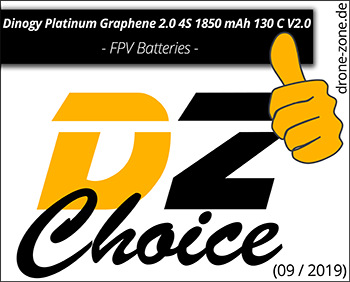
Pro
- Very low IR
- Very high build quality
- Nice voltage stability
- Perfect cell drift
- Fair pricing
- All data printed on the back of pack is a plus
- Decent weight ratio compared to other graphene batteries
Contra
- Trapped in the C-Rating-Label-Race (as most of the other battery manufacturers)
- The balancer wire is a little too short for our taste
Buy Dinogy Batteries on Amazon!*
Other packs of this line up tested:
- Dinogy Platinum Graphene 2.0 4S 1300 mAh 130 C V2.0
- Dinogy Platinum Graphene 2.0 4S 1600 mAh 130 C V2.0
What to know more about Dinogy and the company behind the brand? Check out our interview with L&E Battery (exciting battery stuff!).




